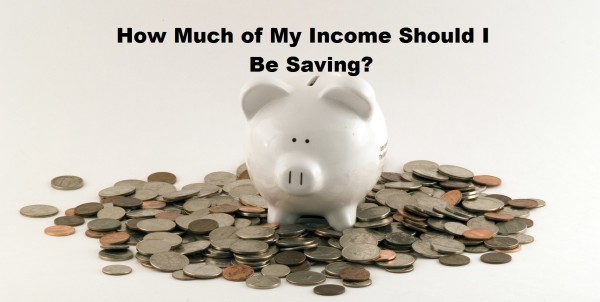10%. Ten percent of your income should go into savings.
Now people who see that tend to fall into three groups. Group one says – “Okay, that seems right by me.” Good, that was easy. Group two says, “But I’d like to save more than that.” I say to them, “Go ahead, save more. That’s a good thing.” Then there’s group three. They’re saying, “You must be nuts, I can’t possibly save 10% of my income!” This post is for you.
Seriously, if you’re living paycheck to paycheck, barely making ends meet, you’re the one who needs a savings cushion the most. Think about it. A rich person has some car trouble–it’s an inconvenience at most. A poor person gets some car trouble and it can ruin your life. Let’s say you have no savings and your car breaks down, it’s going to cost $1000 for fix. You don’t have the money. You can’t get to work without the car so you lose your job. No job, you can’t pay the rent, you get evicted. Crazy right? But this stuff happens to real people all the time.
A little bit of savings cushion can prevent catastrophe.
But 10%, that almost seems impossible. I know, but the lower your income, the more you need that cushion. Let’s say you’re working and your take home pay is $300 a week, that’s $30 you need to save. Now I’m talking about regular saving here, not sticking money into an IRA. Before you start saving for retirement, you need to have your behind covered for emergencies first.
If you save $30 a week for a year, you’ll have over $1500 socked away. It’s a lot easier to deal with car trouble with $1500 in the bank than it is with zero. (Believe me, I speak from experience. I’ve had car trouble when I’ve been broke, and car trouble when I’ve had money. Having money is way better. Way better.)
Now you might not have a problem, you may have that $1500 saved up and then save up another $1500 the next year and then you’ve got $3000 in the bank. How awesome is that?
Or maybe you hit a rough patch and your savings goes back down to zero, but hopefully the rough patch was a little easier because you had some cash stashed away.
So how do you save 10% of your income? You’ve got to pay yourself first. I know, you’re thinking I’ll pay my bills and then save the rest. I’ve tried that, I always wound up with no money at the end when I tried to save that way. Pay yourself first. I don’t care if you don’t have a fancy bank account. You can stuff it in your mattress for all I care. But stash it somewhere. (Okay, I do like bank accounts, but if you really have no money, some banks won’t even look at you without $1000 or more so I understand if you don’t have a bank account at first.)
Set goals for yourself. You can make up your own goals, but I got these from a financial seminar I took once. I don’t think the speaker would mind if I shared them:
Goal 1: save $100
Goal 2: have $1000 saved
Goal 3: have $5000 saved
Goal 4: start investing in a retirement account in addition to your savings.
If you’ve already reached all these goals then congratulations, you’re already on the right track. You want to keep saving 10% of your income, but you can be putting some of that savings into retirement while still adding to your regular savings as well. I like to see 6 months to a full year of income in your savings account.
You don’t get any tax breaks for saving. It’s not sexy either. But having some money set aside for emergencies is probably the smartest financial decision you’ll ever make. (Well, and smart is sexy right?)

